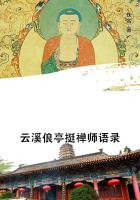A calculation made by Green in his earlier years has a certain value. By the time he had accomplished 200 ascents he was at pains to compute that he had travelled across country some 6,000 miles, which had been traversed in 240 hours. From this it would follow that the mean rate of travel in aerial voyages will be about twenty-five miles per hour. Towards the end of his career we find it stated by Lieutenant G. Grover, R.E., that "the Messrs. Green, Father and Son, have made between them some 930 ascents, in none of which have they met with any material accident or failure." This is wonderful testimony, indeed, and we may here add the fact that the father took up his own father, then at the age of eighty-three, in a balloon ascent of 1845, without any serious consequences. But it is time that some account should be given of a particular occasion which at least provided the famous aeronaut with an adventure spiced with no small amount of risk. It was on the 5th of July, 1850, that Green ascended, with Rush as his companion, from Vauxhall, at the somewhat late hour of 7.50 p.m., using, as always, the great Nassau balloon. The rate of rise must have been very considerable, and they presently record an altitude of no less than 20,000 feet, and a temperature of 12 degrees below freezing. They were now above the clouds, where all view of earth was lost, and, not venturing to remain long in this situation, they commenced a rapid descent, and on emerging below found themselves sailing down Sea Reach in the direction of Nore Sands, when they observed a vessel. Their chance of ****** land was, to say the least, uncertain, and Green, considering that his safety lay in bespeaking the vessel's assistance, opened the valve and brought the car down in the water some two miles north of Sheerness, the hour being 8.45, and only fifty-five minutes since the start. The wind was blowing stiffly, and, catching the hollow of the half-inflated balloon, carried the voyagers rapidly down the river, too fast, indeed, to allow of the vessel's overtaking them. This being soon apparent, Green cast out his anchor, and not without result, for it shortly became entangled in a sunken wreck, and the balloon was promptly "brought up," though struggling and tossing in the broken water. A neighbouring barge at once put off a boat to the rescue, and other boats were despatched by H.M. cutter Fly, under Commander Gurling. Green and Rush were speedily rescued, but the balloon itself was too restive and dangerous an object to approach with safety. At Green's suggestion, therefore, a volley of musketry was fired into the silk' after which it became possible to pass a rope around it and expel the gas. Green subsequently relates how it took a fortnight to restore the damage, consisting of sixty-two bullet rents and nineteen torn gores.
Green's name will always be famous, if only for the fact that it was he who first adopted the use of coal gas in his calling.
This, it will be remembered, was in 1821, and it should be borne in mind that at that time household gas had only recently been introduced. In point of fact, it first lighted Pall Mall in 1805, and it was not used for the general lighting of London till 1814.
We are not surprised to find that the great aeronaut at one time turned his attention to the construction of models, and this with no inconsiderable success. A model of his was exhibited in 1840 at the Polytechnic Institution, and is described in the Times as consisting of a miniature balloon of three feet diameter, inflated with coal gas. It was acted on by fans, which were operated by mechanism placed in the car. A series of three experiments was exhibited. First, the balloon being weighted so as to remain poised in the still air of the building, the mechanism was started, and the machine rose steadily to the ceiling. The fans were then reversed, when the model, equally gracefully, descended to the floor. Lastly, the balloon, with a weighted trail rope, being once more balanced in mid-air, the fans were applied laterally, when the machine would take a horizontal flight, pulling the trail rope after it, with an attached weight dragging along the floor until the mechanism had run down, when it again remained stationary. The correspondent of the Times continues, "Mr. Green states that by these ****** means a voyage across the Atlantic may be performed in three or four days, as easily as from Vauxhall Gardens to Nassau."
We can hardly attribute this statement seriously to one who knew as well as did Green how fickle are the winds, and how utterly different are the conditions between the still air of a room and those of the open sky. His insight into the difficulties of the problem cannot have been less than that of his successor, Coxwell, who, as the result of his own equally wide experience, states positively, "I could never imagine a motive power of sufficient force to direct and guide a balloon, much less to enable a man or a machine to fly." Even when modern invention had produced a motive power undreamed of in the days we are now considering, Coxwell declares his conviction that inherent difficulties would not be overcome "unless the air should invariably remain in a calm state."
It would be tedious and scarcely instructive to inquire into the various forms of flying machines that were elaborated at this period; but one that was designed in America by Mr. Henson, and with which it was seriously contemplated to attempt to cross the Atlantic, may be briefly described. In theory it was supposed to be capable of being sustained in the air by virtue of the speed mechanically imparted to it, and of the angle at which its advancing under surface would meet the air.
The inventor claimed to have produced a steam engine of extreme lightness as well as efficiency, and for the rest his machine consisted of a huge aero-plane propelled by fans with oblique vanes, while a tail somewhat resembling that of a bird was added, as also a rudder, the functions of which were to direct the craft vertically and horizontally respectively. Be it here recorded that the machine did not cross the Atlantic.
One word as to the instruments used up to this time for determining altitudes. These were, in general, ordinary mercurial barometers, protected in various ways. Green encased his instrument in a ****** metal tube, which admitted of the column of mercury being easily read. This instrument, which is generally to be seen held in his hand in Green's old portraits, might be mistaken for a mariner's telescope. It is now in the possession of the family of Spencers, the grandchildren of his old aeronautical friend and colleague, and it is stated that with all his care the glass was not infrequently broken in a descent.
Wise, with characteristic ingenuity, devised a rough-and-ready height instrument, which he claims to have answered well. It consisted simply of a common porter bottle, to the neck of which was joined a bladder of the same capacity. The bottle being filled with air of the density of that on the ground, and the bladder tied on in a collapsed state, the expansion of the air in the bottle would gradually fill the bladder as it rose into the rarer regions of the atmosphere. Experience would then be trusted to enable the aeronaut to judge his height from the amount of inflation noticeable in the bladder.















